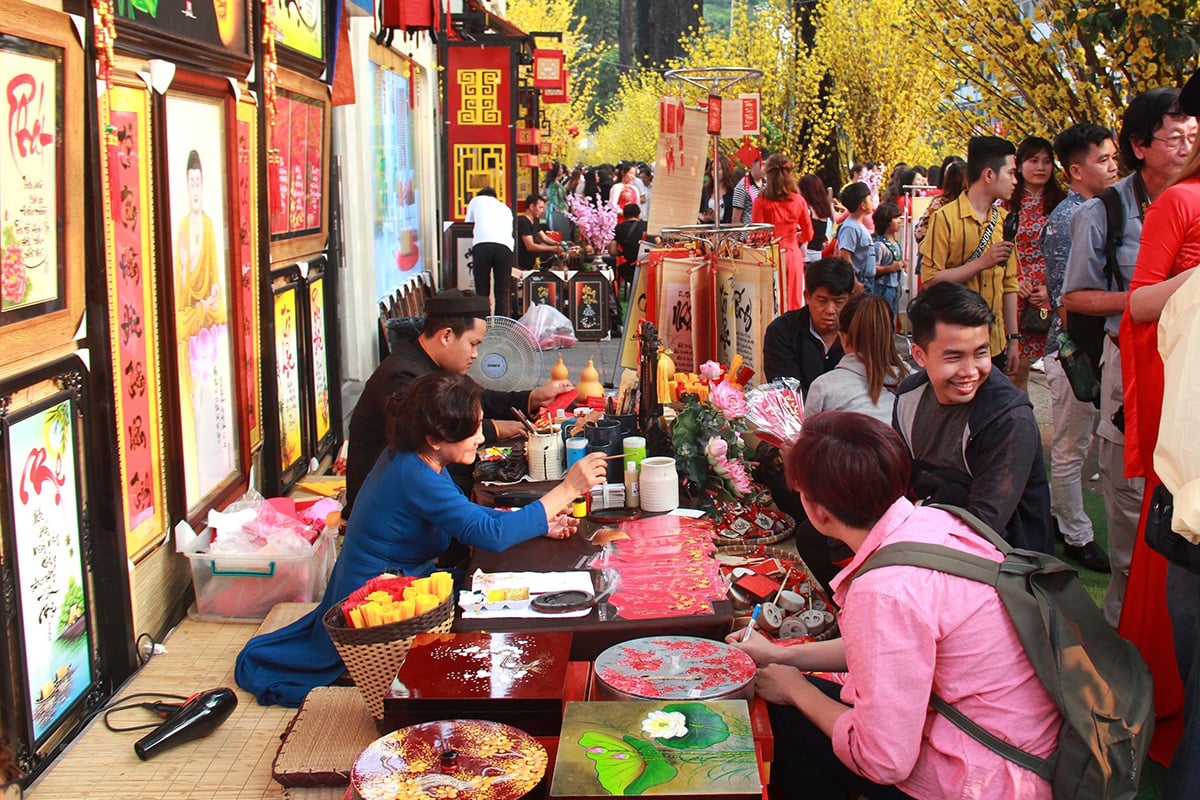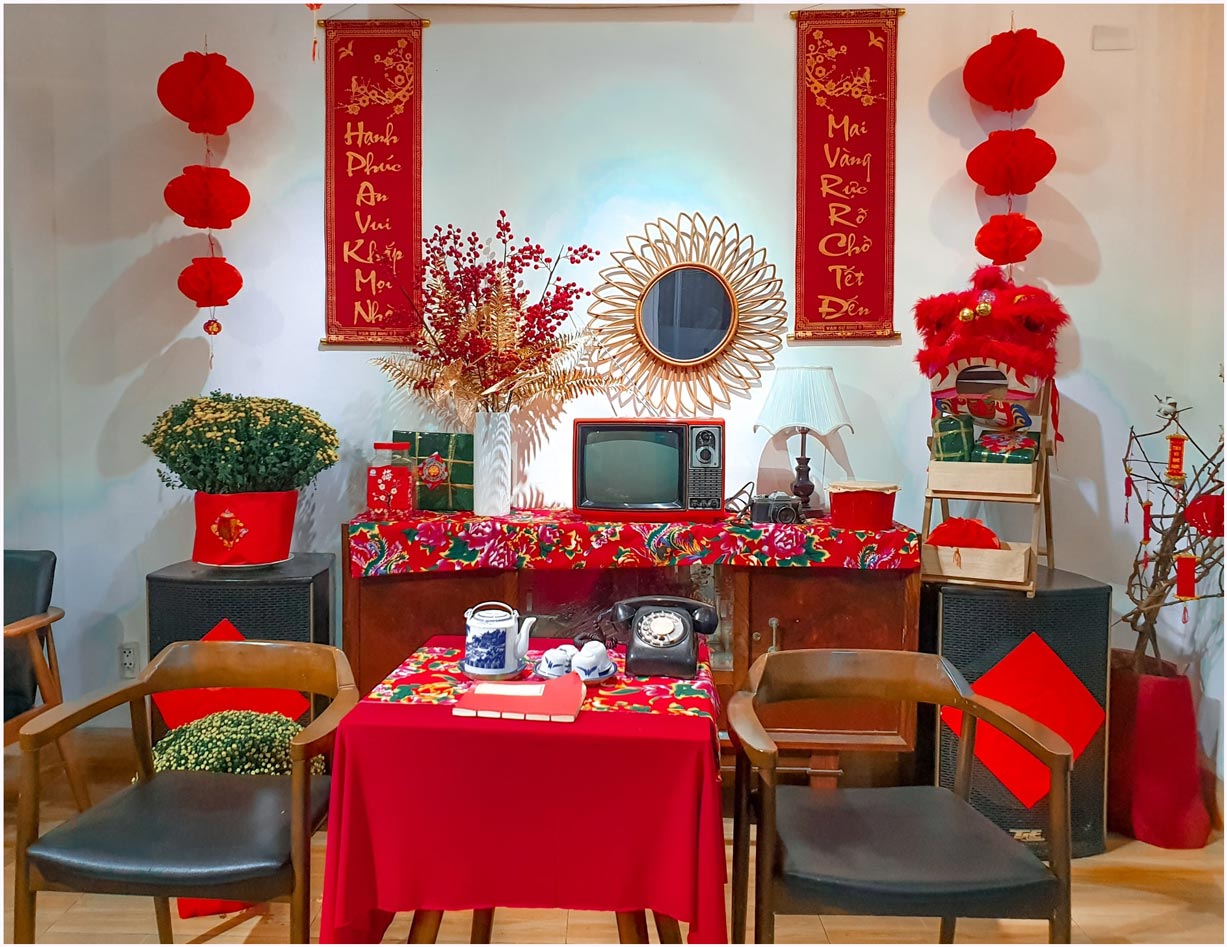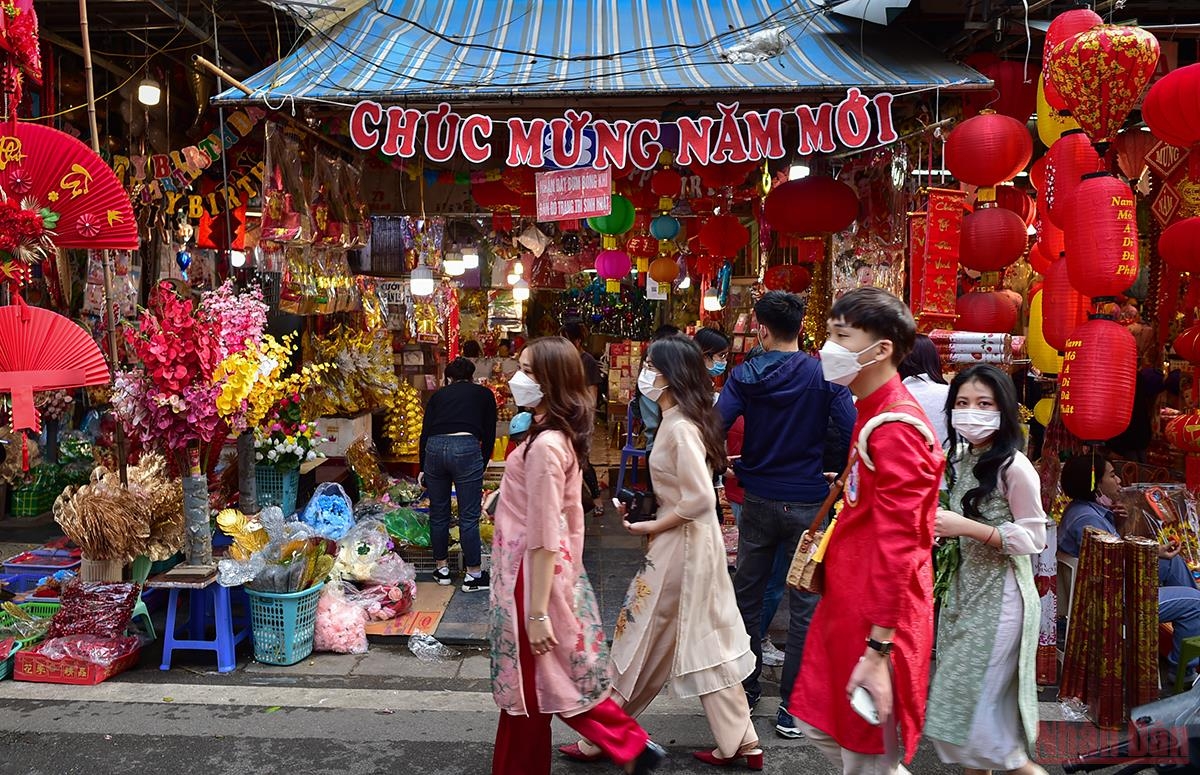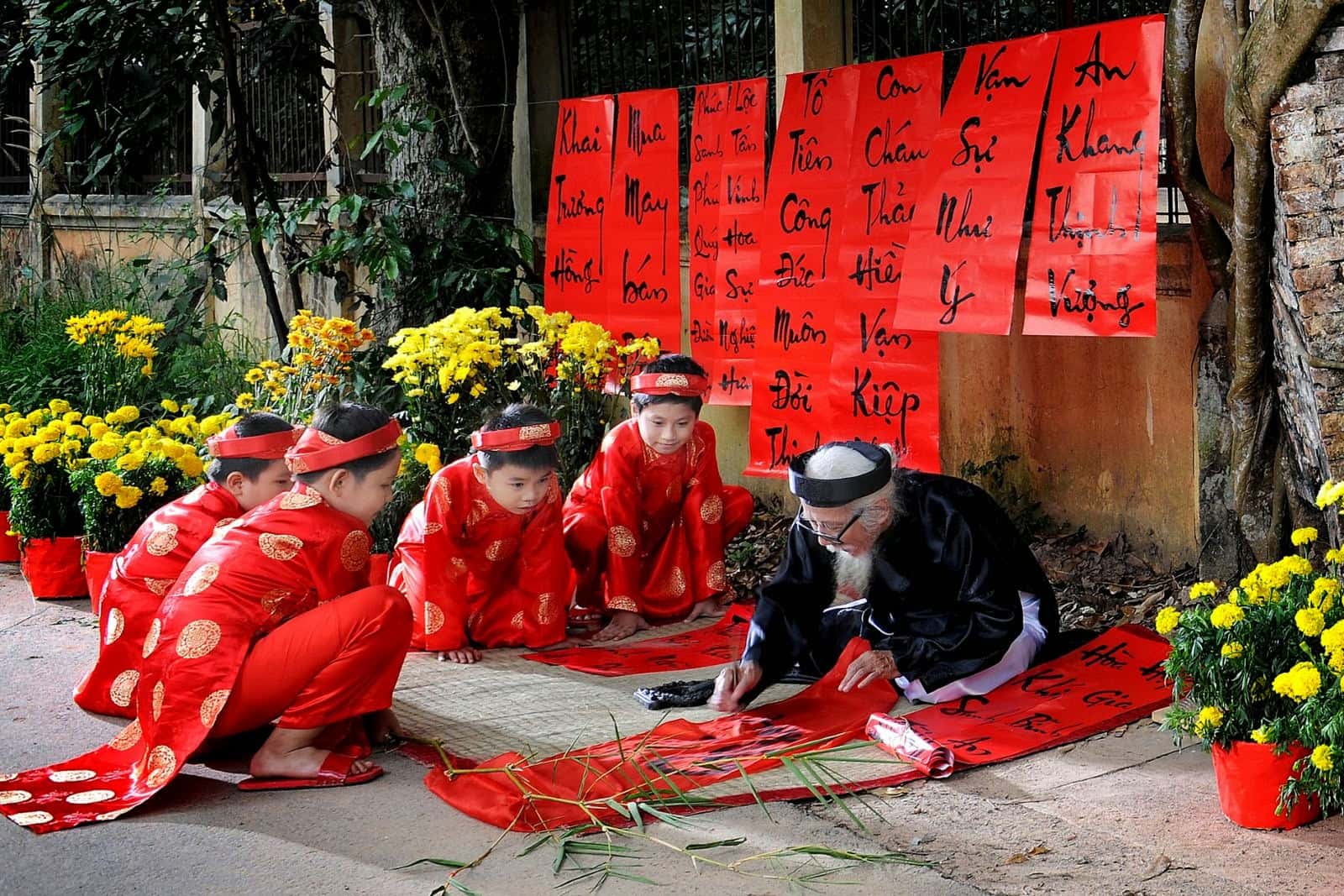Vietnamese New Year, also known as the Tet holiday, is the most significant and highly anticipated event of the year in Vietnam. It marks the start of the lunar calendar and is a time for family reunions, paying homage to ancestors, and wishing for good fortune in the upcoming year.
If you are planning a Vietnam travel journey, be sure to experience the vibrant and richly steeped traditions of the Vietnamese New Year, which takes place in late January or early February. This holiday has been passed down for generations and offers a once-in-a-lifetime experience that should not be missed. This article provides an overview of the fascinating customs of Tet and shows you how to make the most of your visit.
1. When is Vietnamese New Year (Tet Holiday)? How long does it last?

The Vietnamese New Year, also known as the Tet Holiday, is traditionally celebrated on the first day of the lunar calendar, which typically falls 1 to 2 months after the Gregorian New Year. As a result, Tet can start anywhere from January 21st to February 9th.
How long does Vietnamese New Year last? This festival is the longest and can last up to seven to nine days, making it one of the most significant celebrations in Vietnam.
2. The history and significance of Vietnamese New Year

The history of Vietnamese New Year can be traced back to the early days of Vietnam, when it was primarily an agricultural society. The holiday marked the beginning of the spring planting season and was a time to honor the gods and ancestors who provided for the community.
As the country developed and urbanized, Tet took on new significance as a time for family gatherings, feasting, and offering prayers to ancestors. It is also a time for reflection and making resolutions for the coming year.
This celebration reminds the Vietnamese people of the value of family, community, and appreciation, making it a beloved tradition that reflects their cultural identity.
3. Things to know about Vietnamese New Year traditions and customs
If you are planning to experience this unique holiday, here are 4 things to know about Vietnamese New Year traditions and customs:
3.1. Preparations leading up to the Tet Holiday

Preparations leading up to the Vietnamese New Year are an essential part of the holiday’s celebration. Vietnamese people believe that how they spend the days before Tet will set the tone for the new year.
Cleaning and decluttering the home is one of the most crucial steps in preparing for Tet. It is believed that cleaning the house before the new year will sweep away the bad luck of the past year and make room for good luck to come in. It is also common to buy new clothes and shoes to wear during Tet. The new attire symbolizes a fresh start and a new beginning for the upcoming year.
Another important tradition leading up to Tet is paying off debts and settling disputes. Vietnamese people believe that starting the new year with outstanding debts or unresolved issues can bring bad luck and hinder prosperity. Therefore, they make an effort to pay off all their debts and settle any disputes before the new year begins.
Preparing traditional Vietnamese foods and drinks is another significant part of Tet preparations. Families often spend days or even weeks preparing for Tet by cooking traditional foods such as banh chung (Vietnamese New Year sticky rice cake), thit kho (caramelized pork), and dua hanh (pickled onions). These dishes are typically made in large quantities as they are shared with family members and visitors during the holiday.
3.2. Traditional foods and drinks

Tet is a time for feasting, and there is a wide variety of delicious traditional food for Vietnamese New Year. Here are some popular dishes and drinks enjoyed during Tet:
- Chung cake: This is a savory cake made of glutinous rice and filled with pork, beans, and other ingredients. It is wrapped in banana leaves and boiled for up to 24 hours. The cake has a symbolic meaning as it represents the earth and the sky.
- Thit kho (caramelized pork): This is a dish of braised pork belly in a sweet and savory sauce, typically flavored with fish sauce, coconut water, and spices like black pepper, garlic, and shallots. It is a favorite dish during Tet, often served with pickled vegetables and rice.
- Dua hanh (pickled onions): Pickled onions are a popular Vietnamese New Year food. They are made by soaking sliced onions in vinegar, sugar, and salt until they become tangy and slightly sweet.
- Candied fruits for Vietnamese New Year: Candied fruits are a popular snack during Tet. They are made by boiling Vietnamese fruits such as kumquats, ginger, and coconut in sugar syrup until they become sweet and chewy.
- Xoi gac (Vietnamese red sticky rice): This is a colorful dish made of sticky rice dyed red with the juice of the gac fruit. The vibrant red color symbolizes fortune and happiness in Vietnamese culture, making it an essential part of Tet festivities.
- Sweet dessert soup: This is a sweet soup made with coconut milk and various types of beans and fruits, such as lotus seeds, longans, and mung beans. It is one of the most popular Vietnamese New Year desserts and is believed to bring good luck and prosperity for the new year.
3.3. How to celebrate Vietnamese New Year – Decorations and symbols

Tet Holiday is a time when the streets and homes of Vietnam come alive with colorful decorations and symbols, each with their own special meaning. Some of the most common Vietnamese New Year decorations include:
- Yellow apricot blossom and peach blossom: These beautiful flowers are the quintessential symbols of Tet and are used to adorn homes and public spaces during the holiday. They are believed to bring good luck, happiness, and prosperity.
- Kumquat trees: These miniature trees are popular decorations during Tet and are often displayed in homes and on the streets. They are believed to represent wealth and prosperity, and their golden fruit is seen as a sign of good fortune.
- Red and gold decorations: Red and gold are the traditional colors of the Vietnamese New Year, symbolizing luck and wealth. Red banners with lucky phrases such as “Cung Chuc Tan Xuan” (Happy New Year) and gold-colored ornaments are commonly used to decorate homes and public spaces. From lanterns to banners, the colors of red and gold can be seen throughout the country during this festive time.
3.4. Activities and events

During the Vietnamese New Year, Vietnamese people engage in a variety of activities and events, such as:
- Family gatherings and feasting: Tet is a time for family reunions, and many people travel long distances to be with their loved ones. It is a time for catching up, sharing stories, and showing gratitude for each other’s presence.
- Visiting relatives and friends: During Tet, it is customary to pay visits to relatives and friends to wish them a happy new year. This is also a time for forgiveness and reconciliation, as people may seek to mend broken relationships and start the new year with a clean slate.
- Giving Vietnamese New Year lucky money: Giving gifts for Vietnamese New Year, such as lucky money envelopes (“li xi” in Vietnamese), is a common practice during the holiday. It involves giving red envelopes filled with money to children, symbolizing good luck and health for the new year. The amount of money varies depending on the giver’s age and relationship with the recipient, but it is typically a small sum.
- Enjoying fireworks, dragon dances, and Vietnamese New Year songs: Fireworks are a popular part of Vietnamese New Year celebrations, as people light up the sky with colorful displays to ward off evil spirits and welcome the new year. Dragon dances accompanied by lively Tet music are also a common sight, with performers dressed in elaborate dragon costumes dancing to the beat of drums and cymbals. These performances are believed to bring good luck and fortune to those who witness them.
- Going to the pagoda: For many Vietnamese people, Tet is a time for spiritual reflection and renewal. Some people may visit the pagoda to pray for health, wealth, and happiness in the new year, or to offer incense and make offerings to the Buddha. This is also a time for making merit, as people may donate money or food to the less fortunate as a way of giving back to their community.
4. Tips for tourists on the trip during Vietnamese New Year

Vietnamese New Year is a unique cultural event that attracts a lot of tourists to Vietnam. However, traveling during this time can also present some challenges. Here are some tips to make the most of your trip during the Vietnamese New Year:
- The Vietnamese New Year holiday sees a large influx of people returning to their hometowns, resulting in high demand for transport and accommodation. To avoid disappointment, book your transportation and lodging well in advance.
- Many businesses and restaurants may be closed for at least the first few days of Tet, so expect limited dining and shopping options. It is also common for cities to be quiet during this time.
- The first few days of Tet offer a unique opportunity to explore Vietnam’s big cities without the usual hustle and bustle. Consider renting a bicycle, scooter, or exploring on foot.
- If you are invited into a family’s home for Tet, it is a great honor. However, it is important not to drop by any Vietnamese home without an invitation, as the first guests of the year are specially chosen to bring good luck to each household.
- Warm Vietnamese New Year wishes go a long way during the Tet holiday. Be sure to smile and say “Chúc Mừng Năm Mới” (Happy Lunar New Year in Vietnamese) to everyone you meet during the first few days of the new year.

